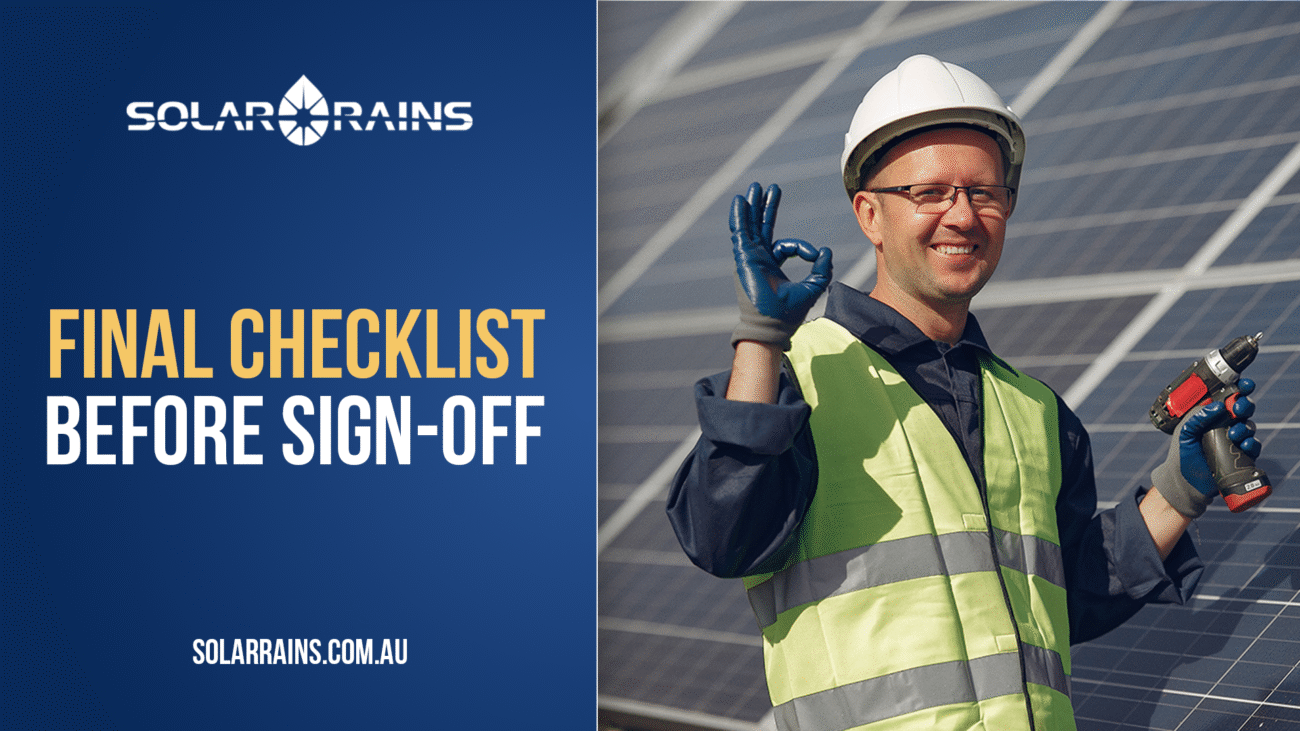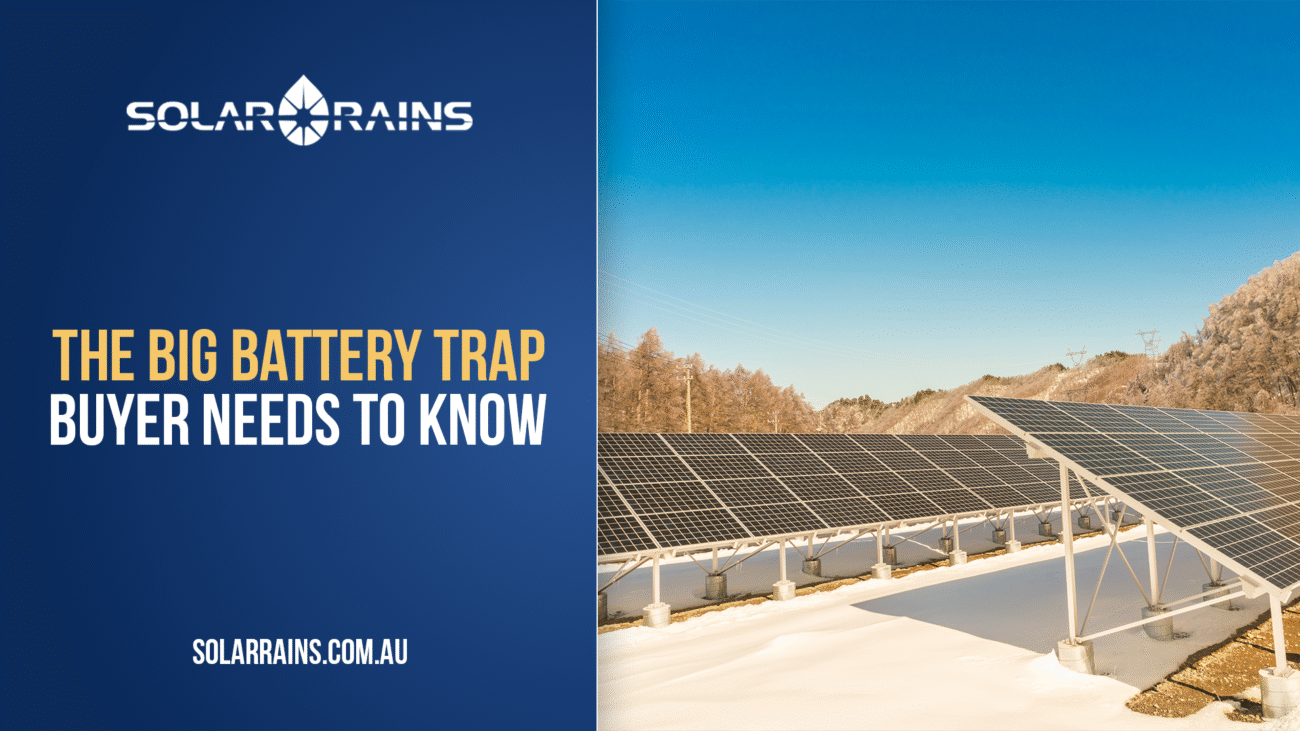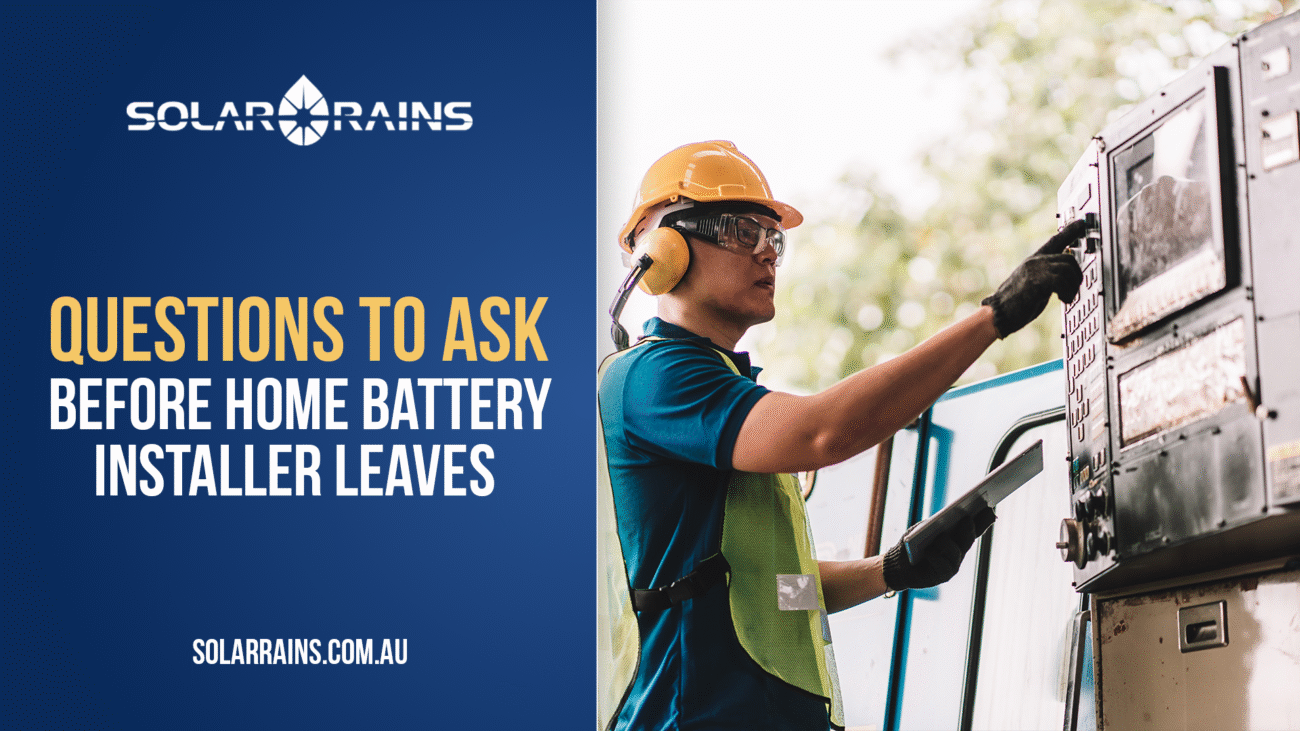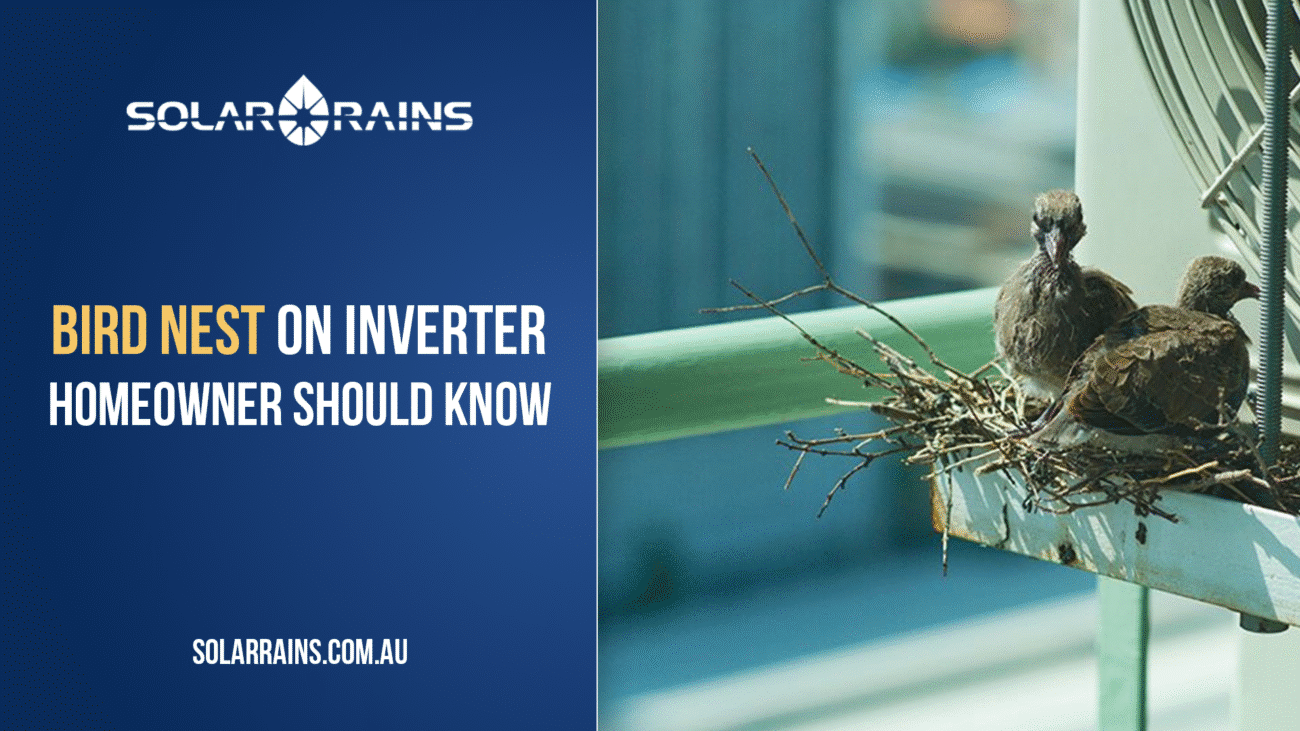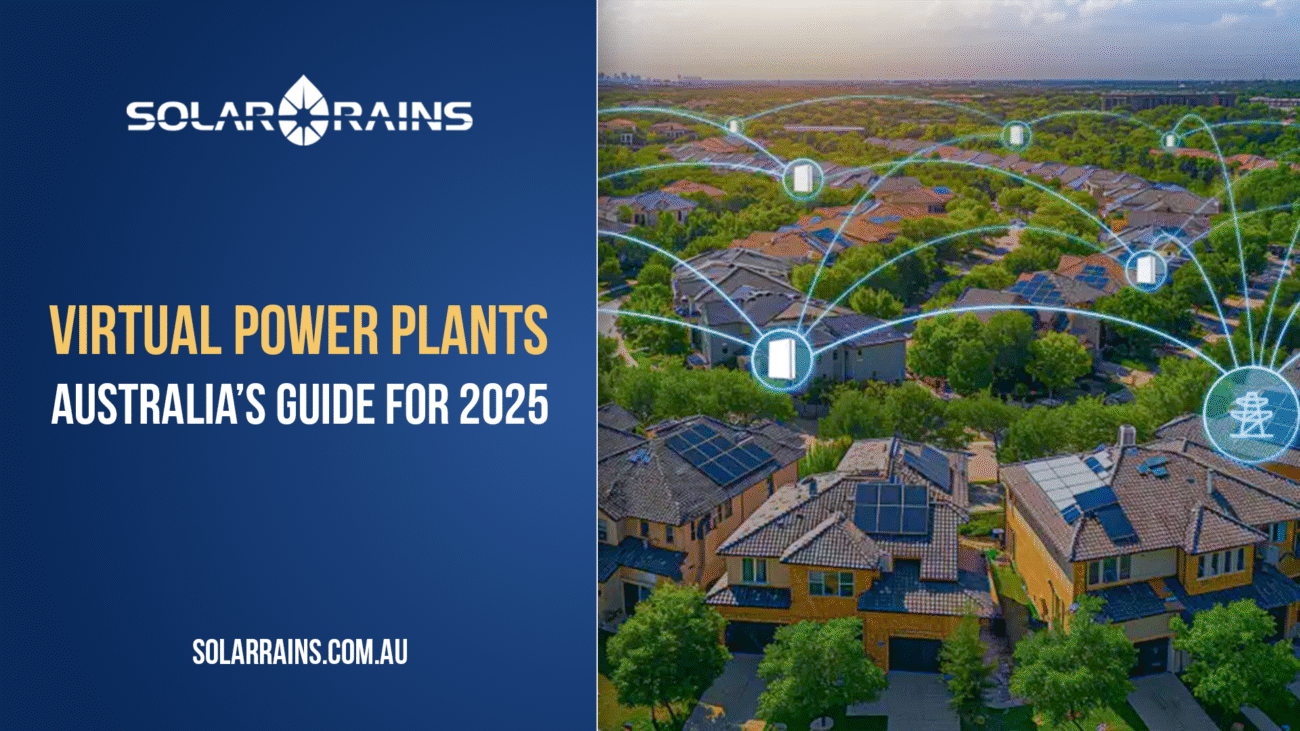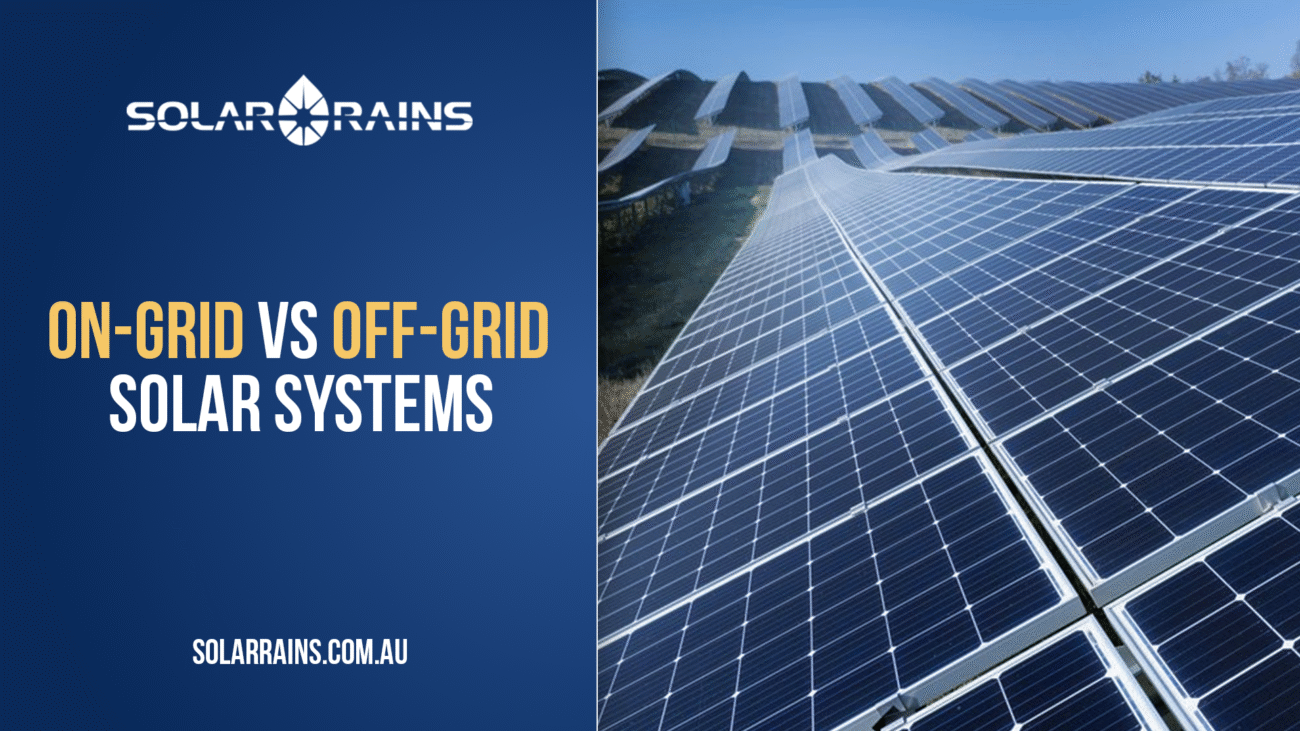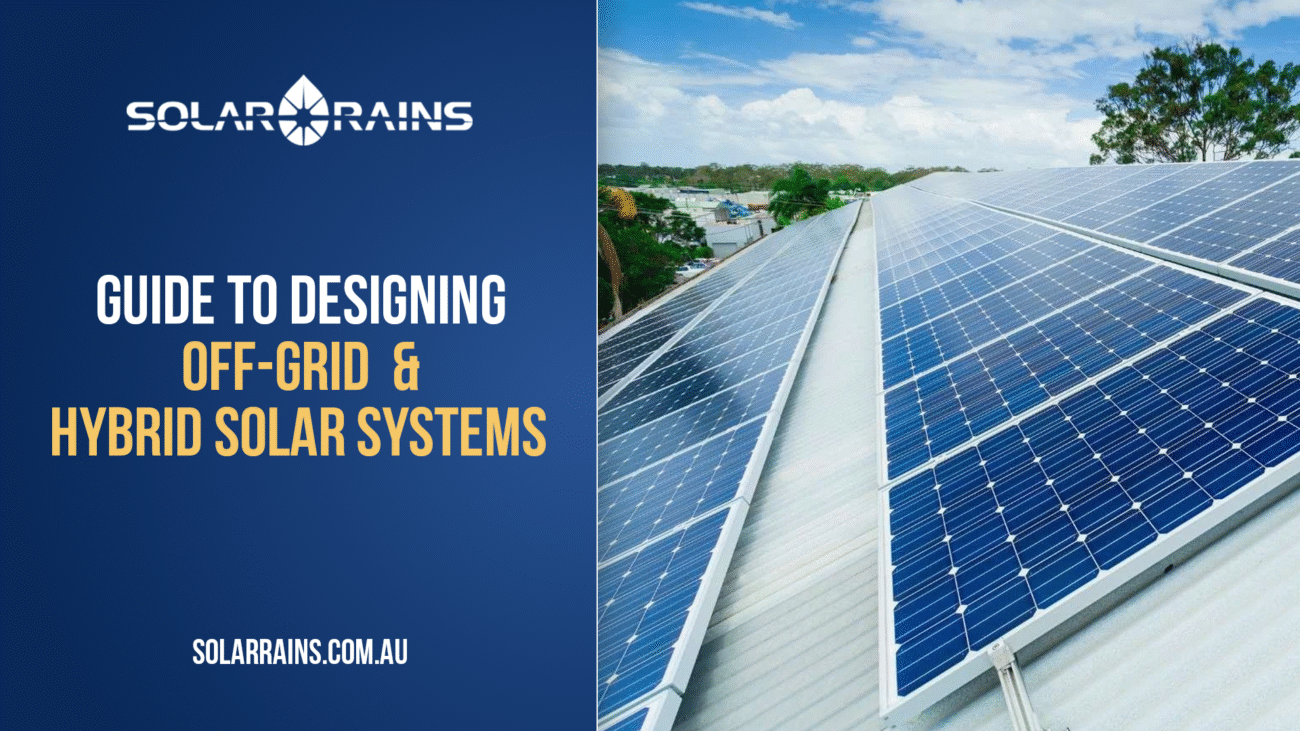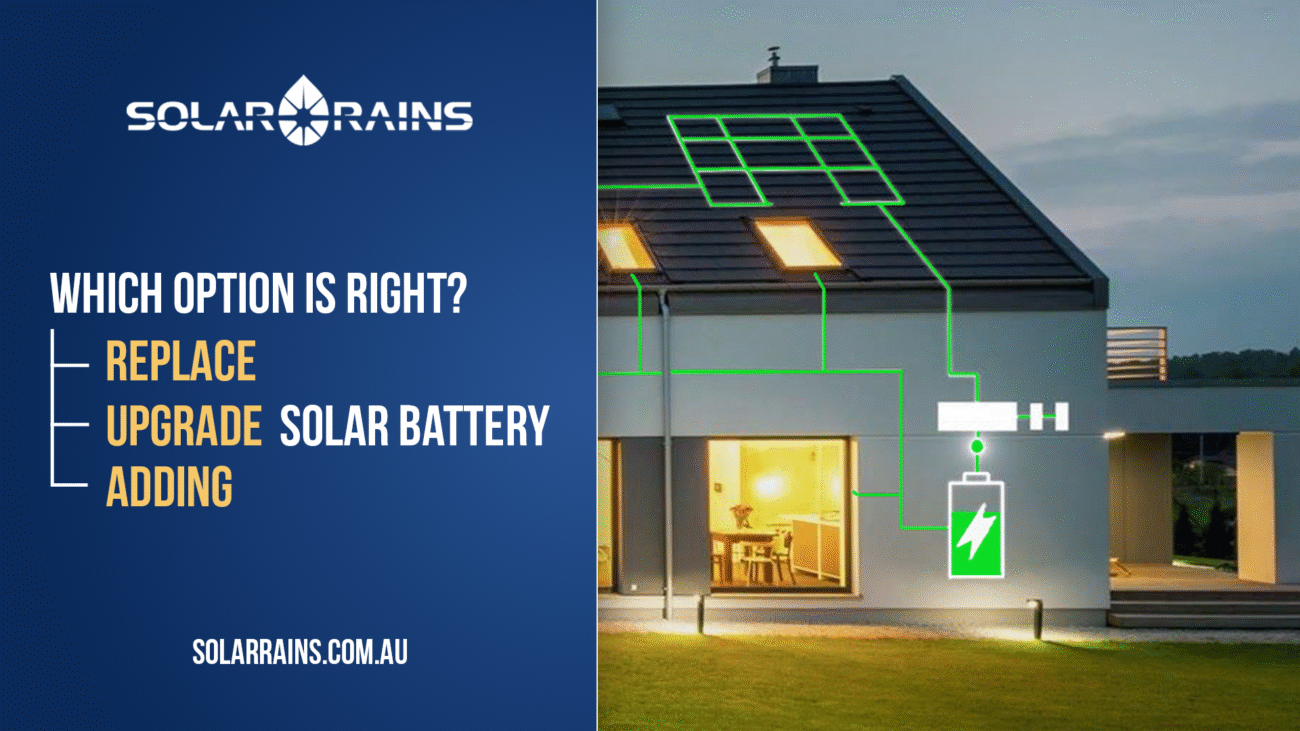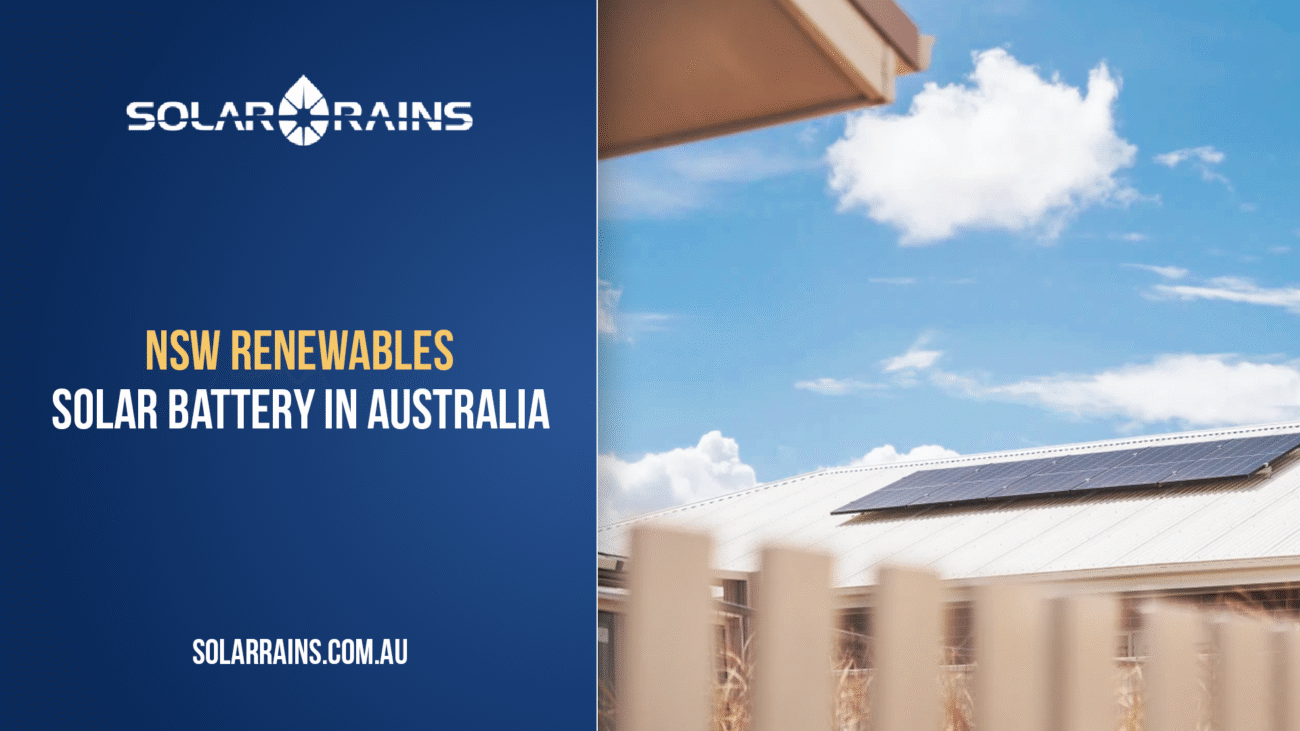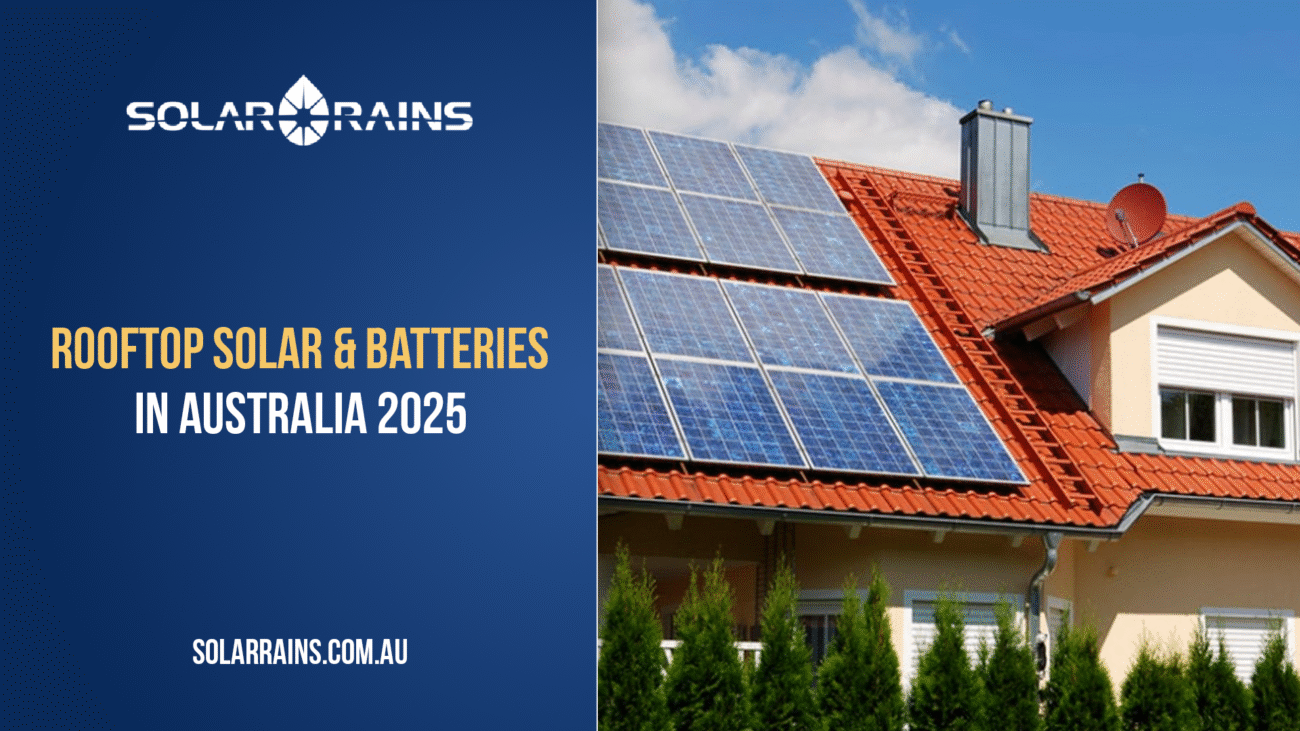Introduction: The Job’s Not Done When the Tools Are Packed Away
So you’ve just had a shiny new home battery installed. Congratulations! You’re one step closer to greater energy independence, blackout protection, and lower power bills. But before you wave goodbye to your installer and start enjoying your new system, there’s one critical step left: a proper handover.
At Solar Rains, we’ve seen too many households left in the dark (literally and figuratively) because they didn’t know what to check once the work was done. In this guide, we’ll walk you through a final checklist to ensure your home battery system is safe, compliant, and working as expected, before the installer drives away.
Are Inspections Required for Your Home Battery?
Depending on your location and system size, local regulations may require a formal inspection by an accredited body or your electricity distributor. Here in Australia, rules vary between states, but typically:
- Victoria & SA: Inspection may be required for connection approval.
- NSW & QLD: Check with your DNSP (Distributed Network Service Provider).
- Off-grid systems: May still require sign-off for compliance and insurance purposes.
Ask your installer:
- “Is an inspection required?”
- “Have all the necessary compliance documents been submitted?”
Pro Tip: Ensure all paperwork is completed before your feed-in tariffs or warranties are activated.
Is the System Properly Labelled?
Labelling might sound like a minor detail, but it’s critical for home battery safety and compliance. Proper labelling ensures emergency responders, electricians, and future technicians can identify components, risks, and shut-down procedures in an emergency.
Key labels should include:
- Battery system disconnects (main and backup)
- Alternative supply circuits
- Emergency shutdown instructions
- AC and DC isolators
What to check:
- Are labels present on all major components?
- Are they weather-resistant and readable?
- Are warning signs (such as “Danger: Battery Storage”) installed?
Are There Any Exposed Terminals?
Your battery should be fully enclosed with no exposed wiring or terminals that could pose a shock hazard. All enclosures should meet the appropriate IP (Ingress Protection) rating — especially for outdoor installations.
Look out for:
- Open fuse holders
- Missing covers
- Loose conduits or dangling cables
If anything looks unfinished or unsafe, don’t hesitate to ask your installer for clarification or corrections.
Already Got Solar? Check Integration
If you’re adding a home battery to an existing solar panel system, integration should be seamless. But often, it’s not. A poorly configured setup can lead to:
- Reduced solar self-consumption
- Inverter shutdowns
- Excessive grid exports
- Missed battery charging opportunities
Ask your installer:
- Is my battery AC-coupled or DC-coupled?
- Will my system prioritise self-consumption?
- Will I still get feed-in tariffs for unused solar?
Ensure they walk you through how the battery fits into your energy flows — including what happens on cloudy days or during blackouts.
Commissioning: More Than Just Powering Up
Commissioning is a formal process of testing, configuring, and documenting your system before it goes live. It’s not just about flicking the “on” switch — it involves verifying performance, safety, and communication settings.
A quality installer should:
- Test charge/discharge cycles
- Configure time-of-use tariffs (if applicable)
- Connect monitoring systems to your Wi-Fi
- Provide manufacturer login details or apps
If you don’t receive a commissioning report, ask for one.
Monitoring: Know What’s Happening in Real Time
Modern home batteries come with apps or online portals to track performance, usage, and state of charge (SOC). Before your installer leaves, you should:
- Download the relevant app (e.g., Alpha ESS, Sungrow iSolarCloud, Tesla)
- Ensure it’s connected to your system
- Understand key metrics (SOC, charge/discharge, solar production)
- Set alerts or thresholds if available
Understanding how to read your dashboard empowers you to spot issues early and maximise your solar ROI.
Alternative Supply Circuits: What’s Actually Backed Up?
Many customers assume that a home battery automatically backs up the entire house. In reality, most systems only support critical loads (fridge, Wi-Fi, lighting, etc.) during blackouts.
Ask:
- Which circuits are connected to backup?
- Are they clearly labelled on your switchboard?
- Will the battery switch over automatically?
Tip: Have your installer show you exactly what stays powered during a blackout — and test it before they leave.
Emergency Shutdown Procedure
Every homeowner should know how to safely shut down their home battery system in case of:
- Fire
- Flood
- Electrical fault
- Servicing
Ask your installer to demonstrate the step-by-step procedure. This should also be outlined in a printed handover document.
Also check:
- Emergency isolator locations
- Contact numbers for support
- What to do if an alarm or light flashes
Who Do You Call?
If something goes wrong, you need to know who to contact — and when.
Get clear answers on:
- Installer vs manufacturer responsibilities
- Battery warranty length & inclusions
- Inverter warranty (if separate)
- Monitoring support
- Emergency response (fire risk, electrical issue)
Keep this information accessible in a binder or digital file.
Neatness Is a Clue
You don’t need to be a technician to spot a sloppy install.
Look for:
- Straight, secure conduits
- Proper cable management (no tangles or stress points)
- Weatherproofing on all outdoor connections
- Clean switchboard labelling
- No holes left in the wall or unsealed penetrations
A tidy job reflects attention to detail — and often, better performance long term.
FAQs
Typically 1–2 days, depending on system complexity and site conditions.
Only if your system is designed with backup (not all are). Ask your installer if yours supports backup mode.
Yes, for excess solar not used or stored. But some batteries allow you to optimise when you export.
Never open or touch internal parts. All enclosures should be sealed. Follow shutdown procedures in emergencies.
Yes, most battery monitoring systems require a stable internet connection for real-time updates.
Final Thoughts: Don’t Let Questions Go Unasked
A home battery system is a long-term investment, one that deserves a complete, clear, and confident handover. At Solar Rains, we believe that homeowners should walk away feeling informed, empowered, and ready to make the most of their solar battery.
Before your installer leaves:
- Ask questions.
- Get demonstrations.
- Confirm documents.
Remember: The handover is not just the end of installation, it’s the beginning of your solar-powered future.

